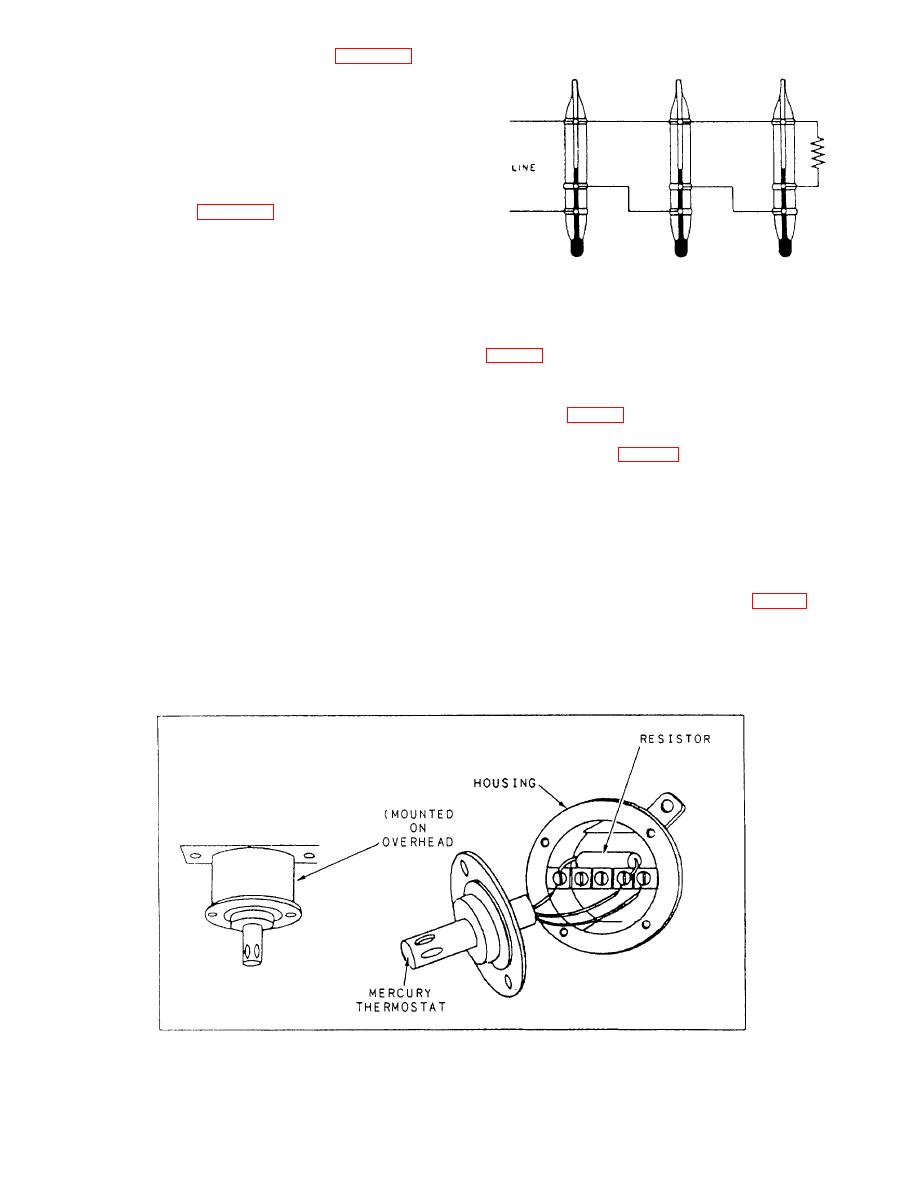 |
|||
|
Page Title:
Figure 9-2.--Mercury thermostat and housing. |
|
||
| ||||||||||
|
|
 spaces that house combustible stores. Figure 9-2 is an
illustration of a mercury thermostat and its housing. The
thermostats require a free circulation of air for proper
operation. Barriers that obstruct the free circulation of
air should never be placed around thermostats, and
thermostats should not be installed in the path of supply
ventilation. As many thermostats as needed for the
prompt detection of high temperature can be connected
to any one line. Figure 9-3 is an illustration of three
thermostats connected in parallel on one line.
Mercury thermostats are available in three
temperature ratings: 105F, 125F, and 150F. The
105F thermostat is normally installed in magazines,
parallel.
while the 125F and 150F thermostats are normally
installed in storerooms and paint lockers. The
thermostats are identical except for the differences in
temperature ratings. When replacing a defective
compart- ment or space to be protected. A four-pin
thermostat, you should always replace it with one
polarized plug fits into a socket base, allowing easy
having the same temperature rating.
replacement (fig. 9-4, view B). The major units of the
detector head are the inner and outer chambers and the
DETECTORS
cold cathode tube (fig. 9-4, view C). The detector
compares the air in the inner chamber with the air in
Detectors used with the alarm, safety, and warning
the outer chamber. When combustion gases and/or
systems include ionization detectors and dual-purpose
smoke are present in the air of the outer chamber, the
detectors.
cold cathode tube fires and supplies the current to
initiate an alarm.
Ionization Detectors
The air in the inner and outer chamber is made
Ionization detectors are used with the com-
conductive by a small quantity of radium (fig. 9-4, view
bustible gas and smoke detector system (circuit 4F)
C). Alpha particles given off by the radium have the
to detect the presence of combustible gases and
ability to ionize air into positive ions and negative
smoke. The combustion gas and smoke detector head
electrons. If this ionized air is introduced into an electric
|
|
Privacy Statement - Press Release - Copyright Information. - Contact Us |